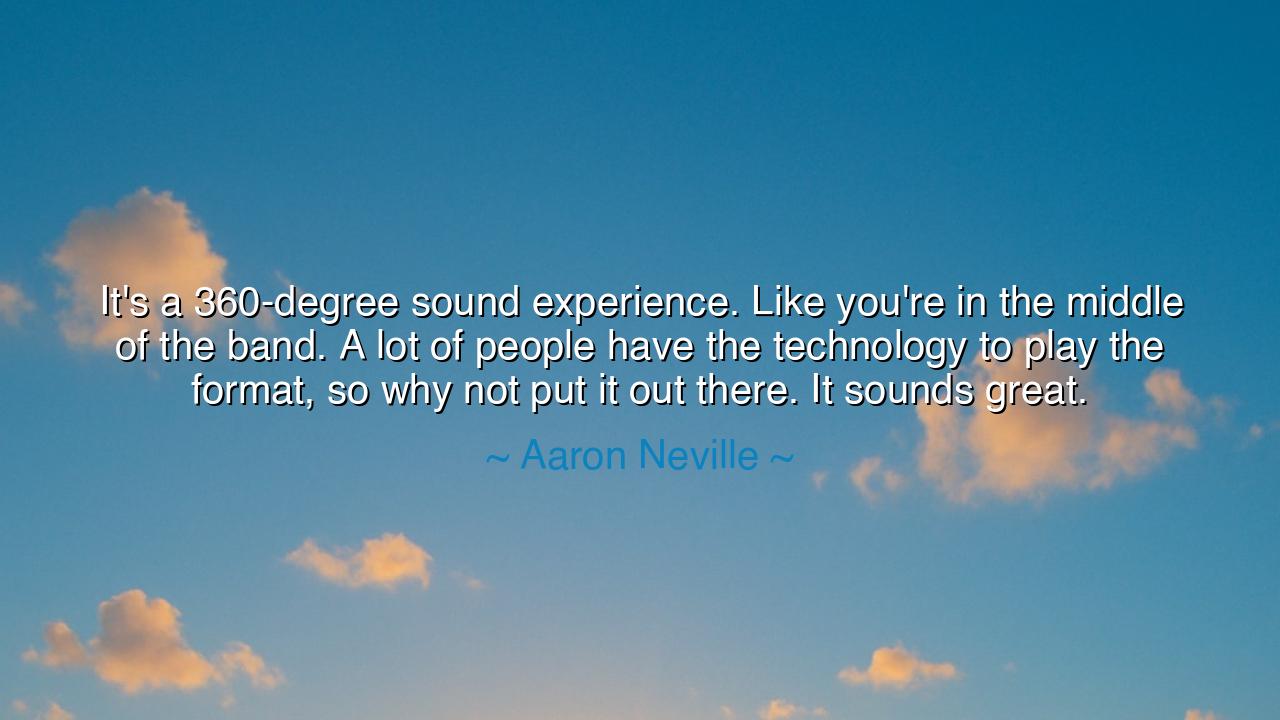
It's a 360-degree sound experience. Like you're in the middle of
It's a 360-degree sound experience. Like you're in the middle of the band. A lot of people have the technology to play the format, so why not put it out there. It sounds great.






Hear the words of Aaron Neville, who speaks not only of music but of the experience of immersion itself: “It's a 360-degree sound experience. Like you're in the middle of the band. A lot of people have the technology to play the format, so why not put it out there. It sounds great.” What he describes is more than a technical advance—it is the fulfillment of an ancient longing, the desire not merely to hear art from afar but to be enveloped by it, surrounded on all sides, as though drawn into the very heart of creation.
He speaks of a 360-degree sound experience, a marvel born of modern technology, yet rooted in the oldest instincts of the human soul. Since the dawn of time, people gathered in circles around the fire, listening to music and story, not as distant spectators but as participants embraced by the rhythm. In Neville’s words we hear the continuation of this timeless circle—only now, instead of drums echoing across the night sky, we have speakers and formats that place us “in the middle of the band.” It is not only sound, but presence. It is art that dissolves the barrier between performer and listener.
The wisdom of his words is also practical: “why not put it out there?” He reminds us that innovation must not remain hidden in laboratories or rehearsal rooms. If the people already hold the tools—the speakers, the players, the formats—then it is only right to share the gift widely. For what good is a treasure locked away? What good is art if it is not heard, felt, and lived? Here Neville speaks as a steward of music, urging that the fruits of new technology be given to the world, that many may partake of their joy.
History gives us a clear example. When stereophonic sound was first introduced in the mid-20th century, many doubted its worth, clinging to the simplicity of monophonic recordings. But when audiences heard orchestras with depth and separation—violins from the left, horns from the right, voices shining in the center—they felt as though they were within the concert hall itself. Skepticism gave way to awe, and a new era of listening was born. Neville’s words echo this same spirit: every generation must embrace the format that brings them closer to the soul of the performance.
Yet his reflection is not about sound alone—it is about the deeper human hunger for immersion. We do not wish merely to observe life, we long to dwell within it. Whether in music, art, or love, the desire is the same: to be surrounded, to be held, to belong. Neville’s embrace of 360-degree sound is but one example of this yearning—the yearning to step out of separation and into union with the moment.
The teaching is clear: do not resist the tools that bring you closer to beauty. When new technology allows you to feel more deeply, to experience more fully, to step nearer to the source of inspiration—welcome it. For though the instruments may change, the goal remains eternal: to connect hearts to the living pulse of art.
Practical actions follow. When you listen, do not settle only for what is distant; seek out experiences that surround you, that invite you in. When you create, think not only of how you express, but of how others will feel enveloped by your work. And when you live, remember Neville’s lesson: if you hold a gift, put it out there. Share what you have, share what you know, share what you create. For in doing so, you draw others into the circle, into the experience, into the song of life itself.






AAdministratorAdministrator
Welcome, honored guests. Please leave a comment, we will respond soon